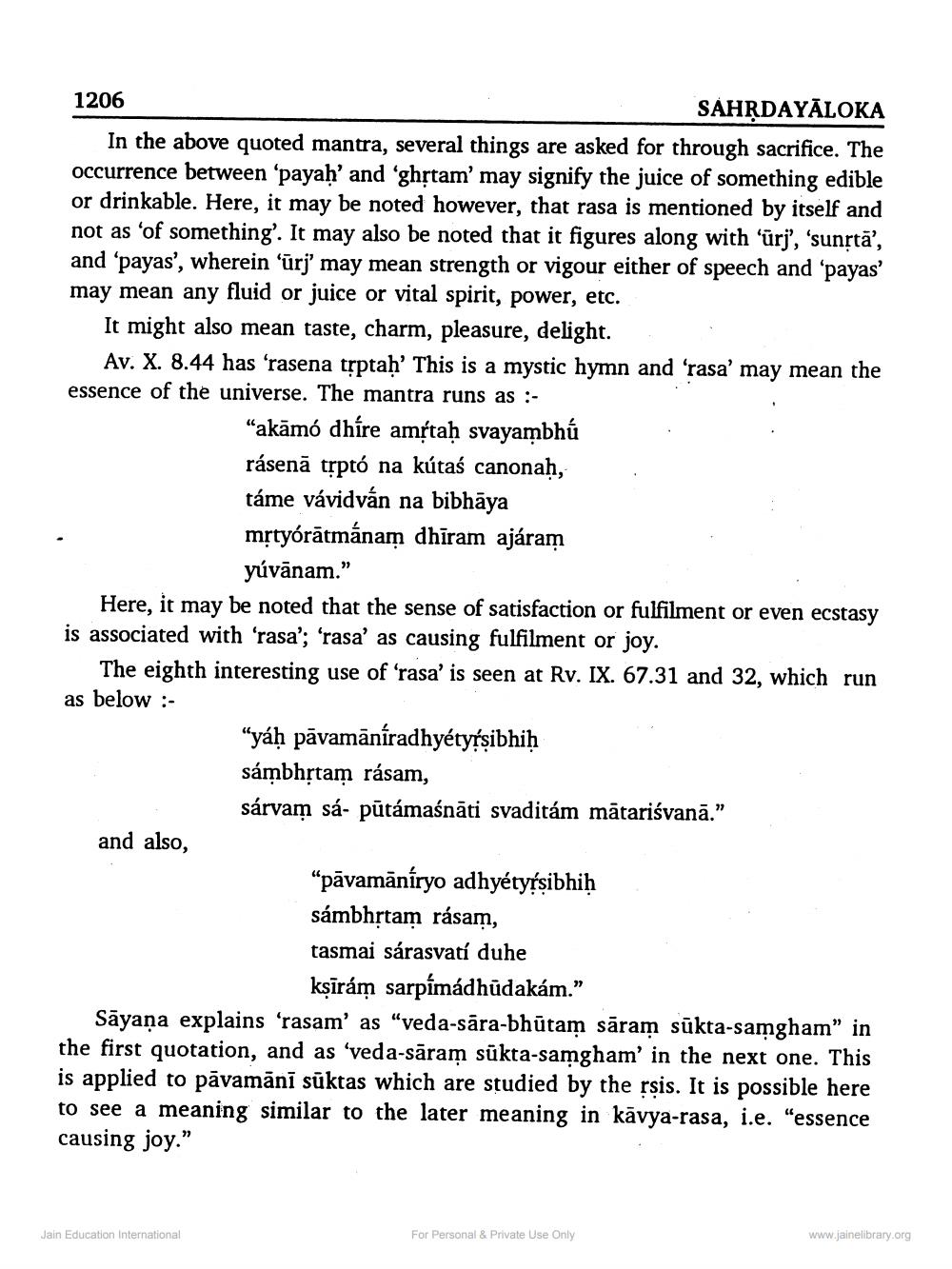________________
1206
SAHRDAYĀLOKA In the above quoted mantra, several things are asked for through sacrifice. The occurrence between ‘payah' and 'ghỉtam' may signify the juice of something edible or drinkable. Here, it may be noted however, that rasa is mentioned by itself and
something'. It may also be noted that it figures along with ‘ürj', 'sunţtā', and ‘payas', wherein ‘ūrj may mean strength or vigour either of speech and 'payas' may mean any fluid or juice or vital spirit, power, etc.
It might also mean taste, charm, pleasure, delight.
Av. X. 8.44 has 'rasena trptah' This is a mystic hymn and 'rasa' may mean the essence of the universe. The mantra runs as :
“akāmó dhíre amŕtaḥ svayambhú rásenā trptó na kútaś canonah, táme vávidván na bibhāya mộtyórātmánam dhīram ajáram
yúvānam.” Here, it may be noted that the sense of satisfaction or fulfilment or even ecstasy is associated with 'rasa'; 'rasa' as causing fulfilment or joy.
The eighth interesting use of 'rasa' is seen at Rv. IX. 67.31 and 32, which run as below :
“yáḥ pāvamāníradhyétyřşibhiḥ sámbhịtam rásam,
sárvam sá- pūtámaśnāti svaditám mātariśvanā.” and also,
“pāvamāníryo adhyétyřsibhiḥ sámbhrtam rásam, tasmai sárasvati duhe
ksīrám sarpímádhūdakám." Sāyaṇa explains 'rasam' as "veda-sāra-bhūtam sāram sūkta-samgham” in the first quotation, and as 'veda-sāram sūkta-samgham' in the next one. This is applied to pāvamānī sūktas which are studied by the rşis. It is possible here to see a meaning similar to the later meaning in kävya-rasa, i.e. "essence causing joy.”
For Personal & Private Use Only
www.jainelibrary.org
Jain Education International




